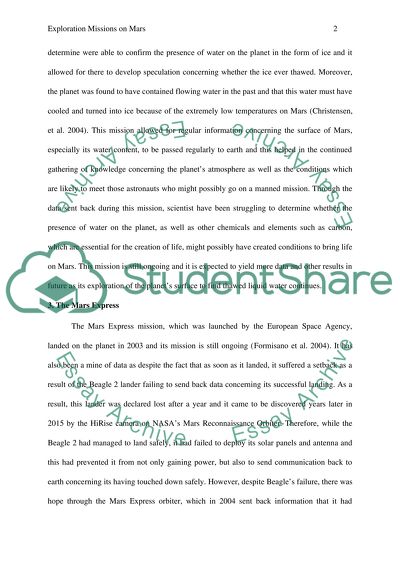Cite this document
(“Exploration Missions on Mars Essay Example | Topics and Well Written Essays - 1750 words”, n.d.)
Retrieved from https://studentshare.org/physics/1677151-exploration-missions-on-mars
Retrieved from https://studentshare.org/physics/1677151-exploration-missions-on-mars
(Exploration Missions on Mars Essay Example | Topics and Well Written Essays - 1750 Words)
https://studentshare.org/physics/1677151-exploration-missions-on-mars.
https://studentshare.org/physics/1677151-exploration-missions-on-mars.
“Exploration Missions on Mars Essay Example | Topics and Well Written Essays - 1750 Words”, n.d. https://studentshare.org/physics/1677151-exploration-missions-on-mars.


